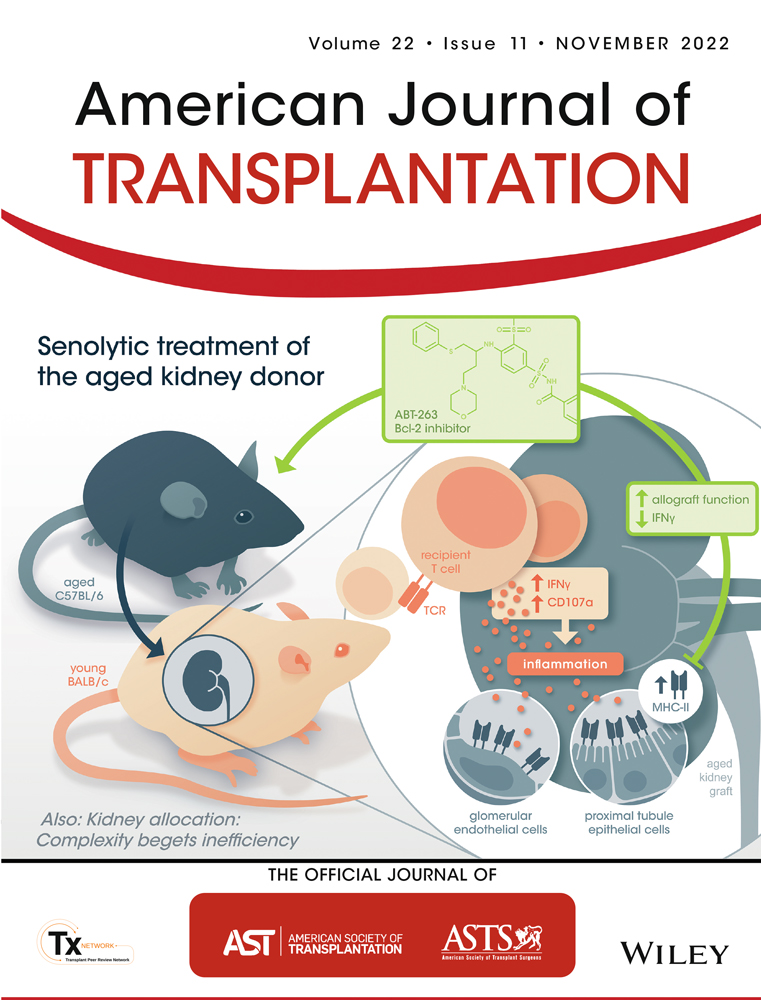A collaborative stewardship of OPOs and transplant centers to maintain equitable allocation when facilitating ex vivo organ preservation
To the Editor:
The transplant community is experiencing an expansion of ex vivo machine perfusion protocols for deceased donor organs with potential gains in organ utilization and the promise of improving graft function following transplantation.1-3 Many of these perfusion protocols are performed by non-Organ Procurement Organization (OPO) entities, such as transplant centers or for-profit companies, which represents a fundamental shift in how ex vivo perfusion is managed. In the United States, OPOs have the responsibility to coordinate the process of organ donation, from recovery until final acceptance for transplantation. These responsibilities can be challenging for an OPO when re-allocation of an ex vivo perfused device is necessary; the OPO is not involved in the management or monitoring of the organ, yet now has the responsibility of consolidating relevant information regarding organ quality and transfer the organ to a back-up center willing to accept an ex vivo organ managed by another center.
For example, once a liver is accepted by the transplant center for a primary patient and the transplant center indicates that ex vivo machine preservation will be initiated, there may be circumstances where the intended recipient is not deemed suitable for transplantation because of a medical condition identified after perfusion is initiated or when the criteria of suitability of the organ as stipulated by the ex vivo protocol is not ultimately fulfilled. Re-allocation in these circumstances should follow the match-run to ensure the integrity of the allocation system is not detoured by ex vivo protocols.
In the short term, it is possible that back-up centers will not accept ex vivo perfused organs as a matter of clinical practicality or unfamiliarity with other centers' protocols. Additionally, it is unclear how a back-up center can thoroughly consent their patient under the time constraints of an organ offer if the ex vivo perfusion is under a different center's research protocol. This may lead to “open” organ offers for any patients at centers managing their own perfusion devices rather than following the patient-specific match-run, giving rise to equity concerns for patients listed at centers not comfortable with ex vivo preservation. Organ allocation policies are designed to be patient-specific not center-specific and optimizing equity along with increased utilization of organs is critical.4, 5
To mitigate deviation from the match-run at re-allocation that could foster center versus patient-specific organ offers, we urge OPO's and transplant centers to take the following actionable steps: OPOs and centers should develop guidelines for when ex vivo perfusion is undertaken independent of the OPO's purview and which should include identifying back-up patients prior to initiation of ex vivo perfusion, standardized perfusion run data sheets where an OPO can upload this information into DonorNet, and standardized steps to remove organs from perfusion devices and package them to back-up centers. In the longer term, the transplant community—either through society or United Network for Organ Sharing led workgroups—should develop consensus and best practice guidelines which will support the growth of ex vivo perfusion while ensuring equity for all listed patients.
DISCLOSURE
The authors of this manuscript have no conflicts of interest to disclose as described by the American Journal of Transplantation.
Open Research
DATA AVAILABILITY STATEMENT
No data associated with submission




